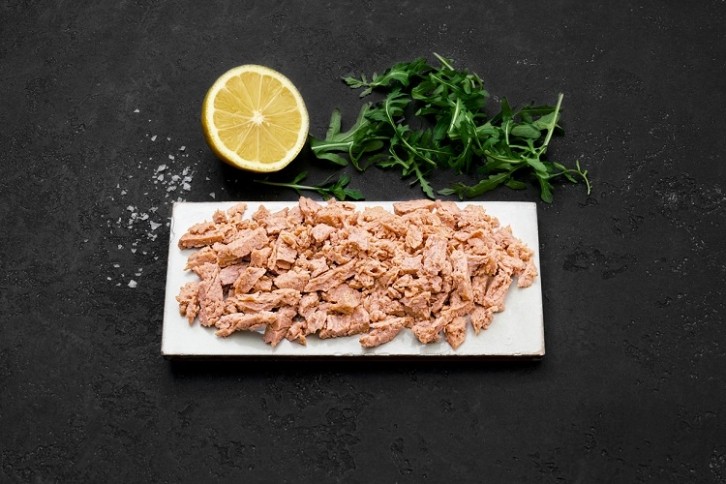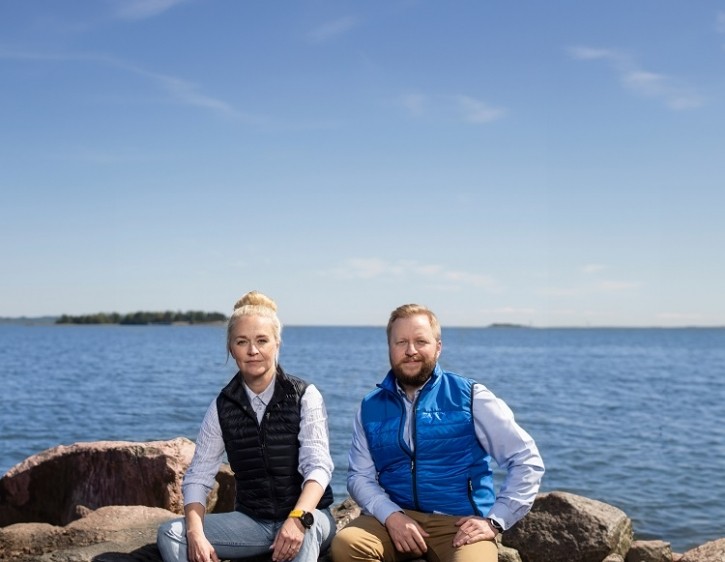Finnish foodtech firm, Hailia, has created a system by which fishing trade facet streams may be upcycled into mainstream seafood merchandise. The progressive new strategy makes use of all edible components of the fish, avoiding pointless waste and enabling fish processors so as to add worth to the uncooked supplies.
“Meals waste is a major concern within the seafood trade” Michaela Lindström, Managing Director of Hailia, informed FoodNavigator.
“As much as 70% of the catch weight of fish, relying on fish species, finally ends up as facet streams. It doesn’t solely contribute to financial losses but in addition has environmental implications, impacting marine ecosystems and sustainability efforts.”
What are meals trade facet streams?
Facet streams within the meals trade can finest be described as waste merchandise, which aren’t utilized by the first trade, however as an alternative offered onto one other trade sector to be used.
Within the seafood trade, facet streams are predominantly fish heads, guts, frames and processing water. These are sometimes offered to supply low-value merchandise, reminiscent of animal feed.
What’s concerned and what’s the completed product?
Hailia is extracting extra from every fish carcass, together with components which have been beforehand cast-off into facet streams or discarded as waste, and turning them right into a product, which resembles a cooked fillet of fish. The completed seafood is ready with an appetising consistency and flavour, offering loads of wholesome vitamins, which might in any other case have been misplaced.
“Our novel course of permits us to realize a texture and mouthfeel paying homage to a cooked fillet of fish, with out fishbones or different particles disturbing the mouthfeel,” explains Lindström.
Otto Kaukonen, CTO of Hailia, provides, “the construction of the product permits for additional processing and integration into a variety of recipes, from soups to sandwich fillings, pastas, and sauces.”
Hailia can be trying to widen the usage of this manufacturing technique to incorporate the at the moment underutilised smaller pelagic fish.
“We see untapped potential inside small pelagic and in addition seafood by-products and facet streams,” says Lindström. “We’re specializing in easy methods to successfully utilise seafood by-products and facet streams for human consumption. This strategy aligns with sustainability objectives and enhances the general effectivity of the seafood trade.”
What are Pelagic fish?
Pelagic fish may be categorised as coastal and oceanic fish. Coastal pelagic fish inhabit sunlit waters as much as roughly 655 toes deep. They embody species reminiscent of anchovies, sardines and menhaden, in addition to the predatory fish that feed on them. Oceanic pelagic fish embody bigger species reminiscent of swordfish, tuna and mackerel.
There aren’t lots extra fish within the sea
Meals waste is a significant downside the world over and the seafood trade is not any exception. Coupled with this, many fish shares worldwide are prone to extinction, on account of overfishing, whereas fish farming is turning into an growing burden on the setting. Poor utilisation of present fish provides is simply serving to exacerbate this downside.
“Sustainability within the meals trade is essential as a result of it helps make sure the long-term availability of assets, minimises environmental affect and addresses international challenges like local weather change, biodiversity loss, and meals safety,” added Lindström.
It’s estimated that the demand for seafood will double by 2050. Nevertheless, present provide ranges are believed to have the ability to sufficiently accommodate the rise in demand if the best way through which assets are managed and utilised is made more practical.
Roughly 30% of the annual European fish manufacturing is rejected for consumption and as an alternative siphoned off into low-value makes use of. This equates to roughly 5 billion kilograms of fish each single yr. If assets aren’t used successfully then provide will battle to fulfill demand as the worldwide inhabitants steadily will increase.
“We do not essentially must catch far more fish. As an alternative, we should always use what we have already got extra correctly. By doing so, we will meet the rising demand for seafood with out harming the setting,” agrees Lindström.
“The shortage of uncooked supplies sooner or later does not solely have an effect on the seafood trade, but in addition meals manufacturing on a large scale. Contemplating this, it’s important to implement resource-efficient ideas and mindsets. We’re proud to be on the forefront, hopefully inspiring others to undertake comparable approaches.”
What extra may be executed to keep away from seafood waste?
Governments and organisations the world over recognise the significance of minimising meals waste and are more and more making it a precedence in coverage making.
“We imagine that rather a lot is already being actively executed, and utilisation of facet streams are high of thoughts for a lot of events,” stated Lindström. “We vote for investing much more in analysis for sustainable and efficient applied sciences and fostering collaboration with governments and conservation organisations to develop and implement sustainable fisheries administration insurance policies.”
That is supported by the European Fee, which is campaigning to be certain that “nationwide efforts in opposition to meals waste are knowledgeable by a stable proof base and help sharing of innovation and finest follow.”
Organisations, together with the World Wildlife Fund (WWF), are supporting efforts to create a extra sustainable seafood trade and have created a brief movie, ‘Ocean to Plate: A Journey into the Seafood Provide Chain’, capturing the lengthy journey seafood goes on earlier than reaching the buyer.
Equally, the World Financial Discussion board is selling ‘entire fish’ considering, encouraging producers to make use of each a part of each fish, saying merely, “to feed the world, we have to waste much less fish.”



